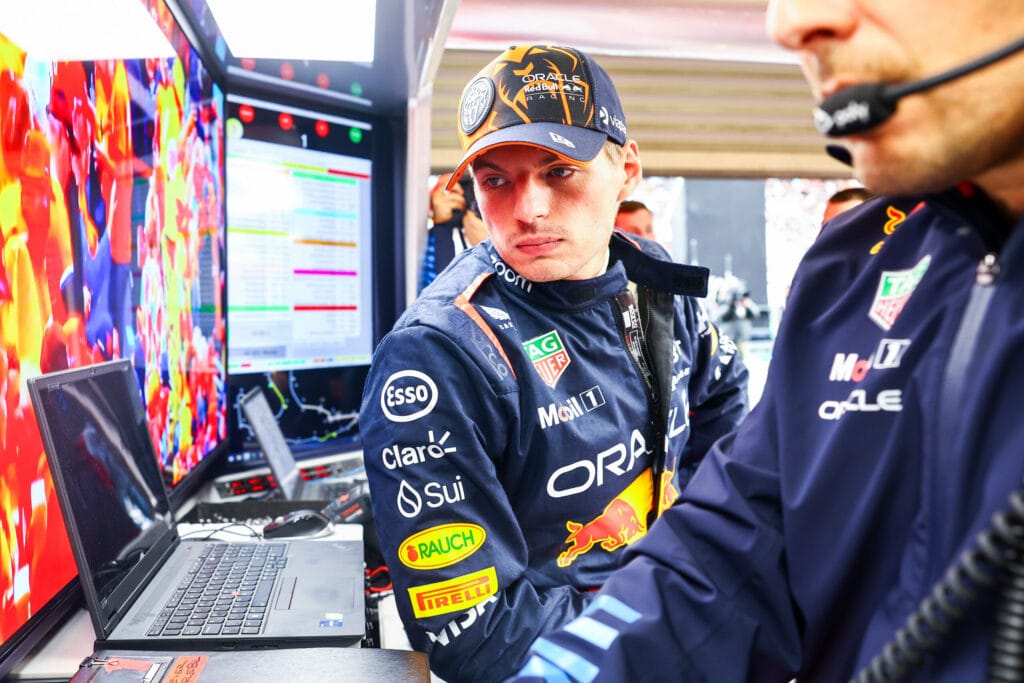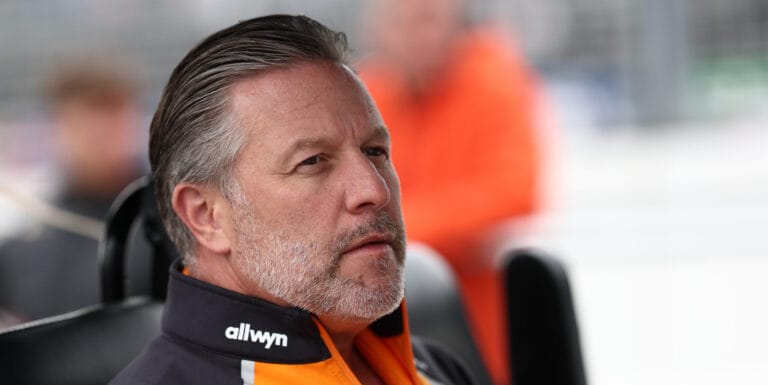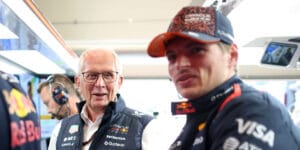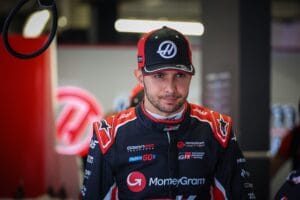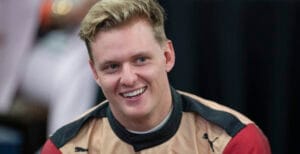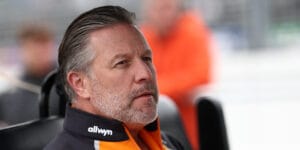Since 2020, Oracle has been the main sponsor of Red Bull’s Formula 1 team. The American company, a developer of software and cloud technology, has become an indispensable link in the race weekends of Max Verstappen and Sergio Pérez‘s team. The in-house Race Data Experience Center in Utrecht provides a fascinating insight…
‘Everyone has the same access to the same data, but it’s about what you do with the data to gain an advantage.’
This quote from Hannah Schmitz, Red Bull’s chief strategy engineer, is displayed on a wall at the beautifully designed Race Data Experience Center. It essentially encapsulates what Oracle does with its technology as Red Bull’s data partner.
In Formula 1, a lot – and increasingly so – revolves around race simulations and computational power. An example? All conceivable race scenarios for a Grand Prix on Sunday are calculated using Oracle’s technology. In total, this involves 16 billion calculations, also utilizing the limitless possibilities of artificial intelligence, machine learning, and the cloud.
On the second floor of Oracle’s Utrecht office, a monocoque of an old Formula Renault car, naturally in Oracle Red Bull livery, is prominently displayed. The seat is slightly larger than a standard F1 seat, allowing visitors of all shapes and sizes to sit in it.
‘More than a bag of money’
In front of the cockpit are three LED screens. At first glance, it’s a standard simulator setup, similar to what you might find at the neighboring RaceSquare. The significant difference, however, lies in the data extracted and the cloud infrastructure, explains Samara Lalmy on behalf of Oracle.
“We actually want to use our Race Data Experience Center to make it clear that our partnership with Red Bull’s Formula 1 team involves much more than a bag of money and a sticker on the car. Our collaboration is about sharing and developing technical knowledge and capabilities,” says Lalmy, a huge fan of the sport herself. “In Formula 1, everything revolves around data. For us, it’s the ultimate user case to show what our technology can do.””In addition to Formula 1, Oracle, one of the world’s largest IT players with offices in 175 countries, is also involved in sailing (SailGP). Furthermore, they are the official data partner of the British Premier League. In this role, they provide player statistics during matches, which can be seen, for example, on BBC’s Match of the Day.
Visitors to the Race Data Experience Center in Utrecht can get behind the wheel of the F1 simulator and, according to Lalmy, playfully familiarize themselves with the data, analytics, and cloud technology that lead to winning race strategies on the circuit. Behind the simulator, a pit wall has been recreated with multiple screens full of numbers, diagrams, and graphs. “People who come here can generally be divided into two types: the group that loves racing in the simulator and the group that loses themselves in all the data on these screens.”
NASA
Wouter Ros, one of the driving forces behind the Race Data Experience Center at Oracle, is the exception to the rule. He is very skilled behind the wheel and has approached Max Verstappen’s lap time at the Circuit of Zandvoort to within half a second on the simulator. In addition, as a whizzkid, he is also familiar with the technology of the Race Data Experience Center.
“In the game we use, there is telemetry, which we capture and split to multiple devices. We use, among other things, Open MCT. We store it in Oracle’s Autonomous Database APEX, but also in Oracle Analytics Cloud for advanced analyses,” Ros explains. Open MCT stands for Open Mission Control Technologies and is used, among other things, by the American space program NASA.
The Race Data Experience Center naturally has a social component. Oracle employees can relax with a few laps in the simulator between tasks or at the Friday afternoon drinks. In addition, it is suitable for relationship marketing towards customers and partners and education. Lalmy: “We show the importance of real-time insights and simulations here. This way, we demonstrate how data analyses can help adjust and improve behavior and decision-making in a business setting.”
In the form of a workshop, students can, for example, run their own analysis after a simulator race. However, the most captivating are the practical examples from the wonderful world of Formula 1.”
Sixteen Billion Calculations
Consider the sixteen billion calculations that are performed on Oracle’s Cloud infrastructure before and during a race weekend. According to Lalmy, this is twenty percent more than what the Red Bull F1 team carried out before their commercial partnership with the American company. “We certainly have a strategic advantage over other teams,” is a statement from Max Verstappen that can be prominently read in the Race Date Experience Center, referring to this fact.
The previous increase in the number of simulations also helps Red Bull stay within the budget cap. “And it’s also very practical, as about ten fewer trucks with hardware on board go to the circuits. During the weekend, dozens of people in the control room at Red Bull in Milton Keynes are busy with data and calculations. One person has a direct line to Hannah on the pit wall. And of course, all relevant data is thoroughly evaluated after each session in the technical debriefs, also with Max Verstappen and Sergio Pérez,” says Lalmy, who indicates that Oracle staff are also permanently stationed in Milton Keynes to ensure the technical side of the collaboration is as well-managed as possible.
Entry Point
Oracle’s entry into Formula 1 – at the end of 2020 – could not have been better timed in retrospect. A year later, Verstappen became world champion for the first time. “There is no causal link between the two,” Lalmy says with a laugh. However, the collaboration has also brought a lot to Oracle. In terms of knowledge sharing (“We also learn a lot from Formula 1”), but certainly also in terms of visibility, branding, and company pride among employees.
“As a company, we now appeal to many more people. I notice this personally at birthdays, for example. People suddenly know Oracle. And the magic of Formula 1 also has a positive effect on attracting young talent, even here locally in Utrecht.”
It makes sense. After all, who wouldn’t want that…? Occasionally simulating during work hours.


